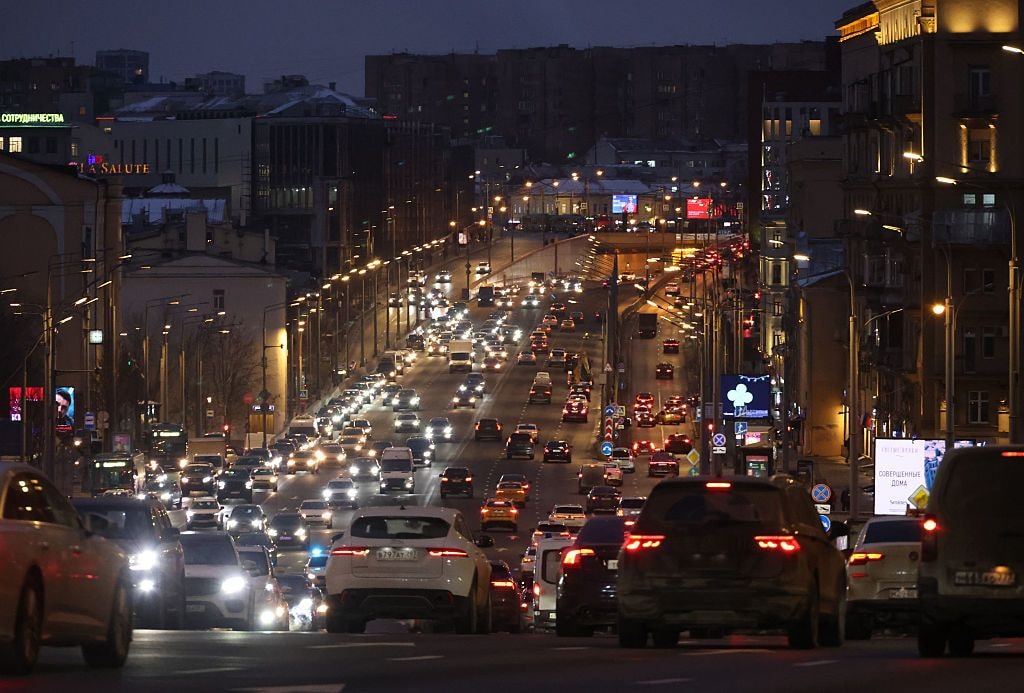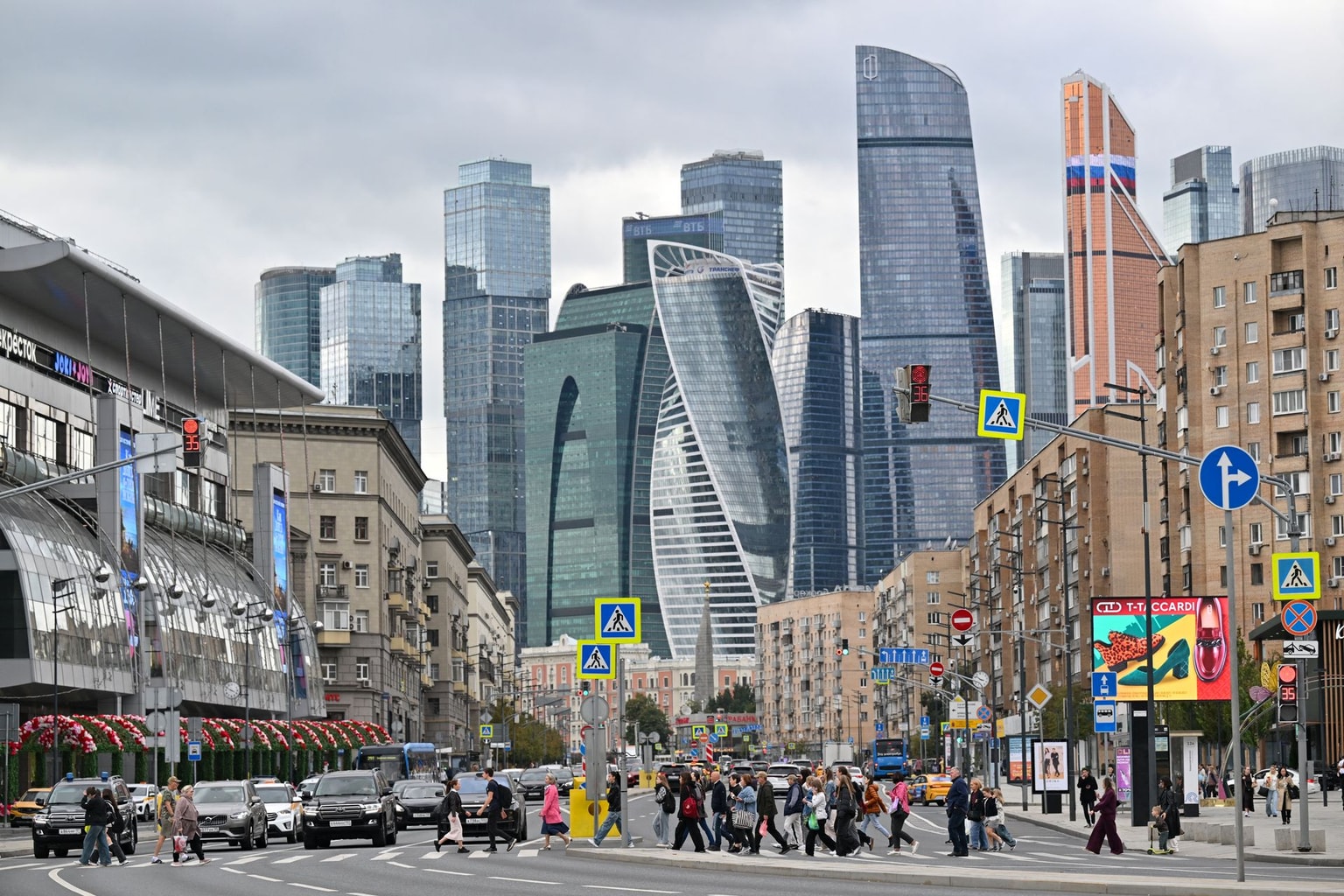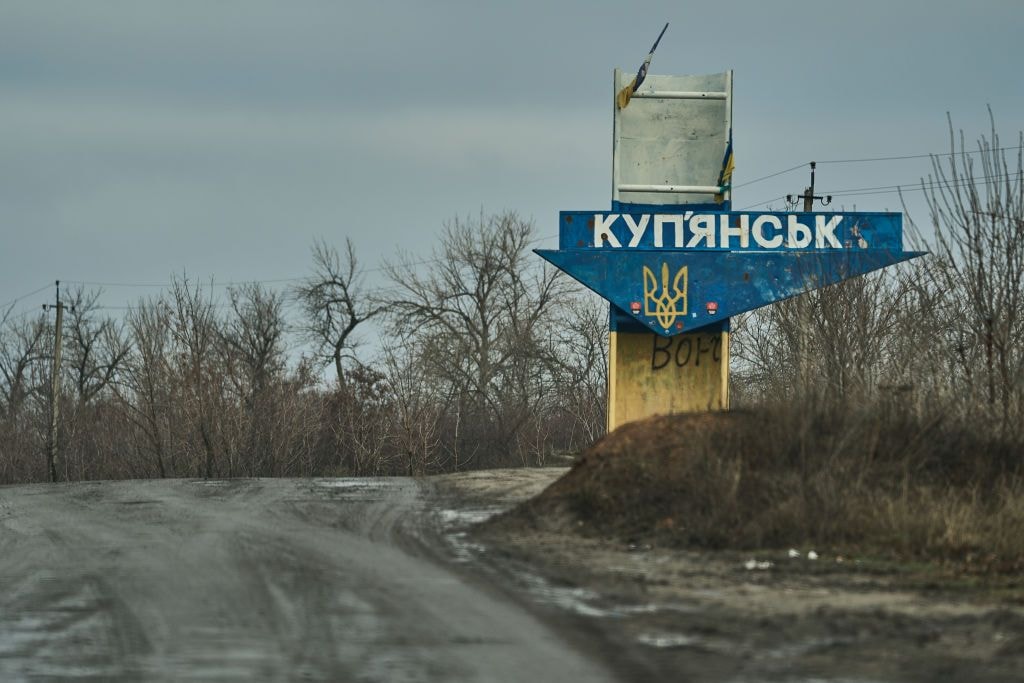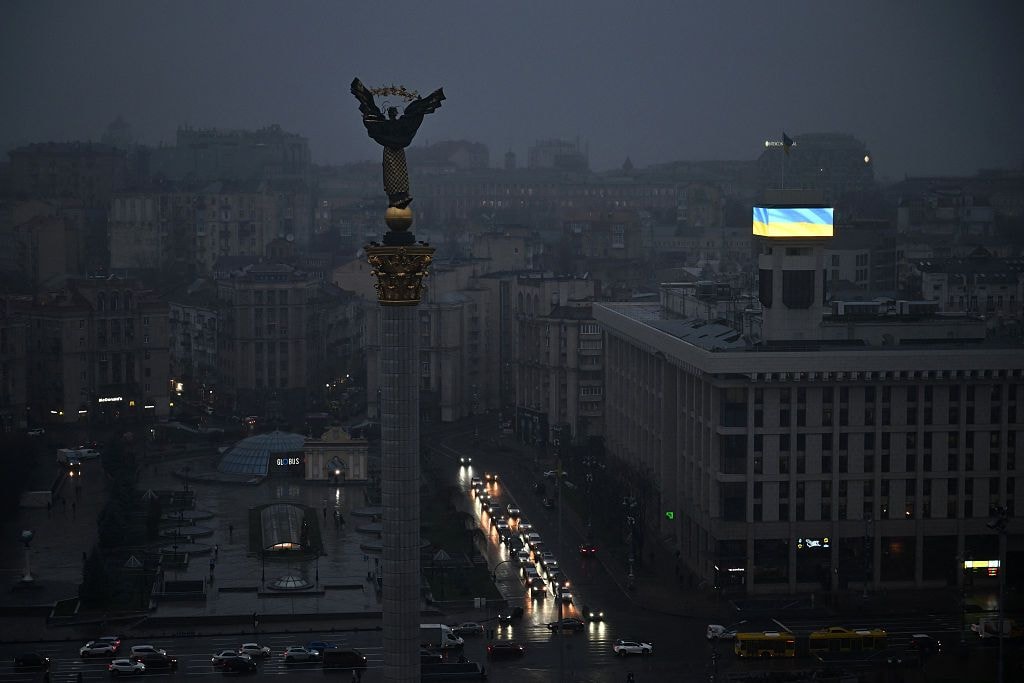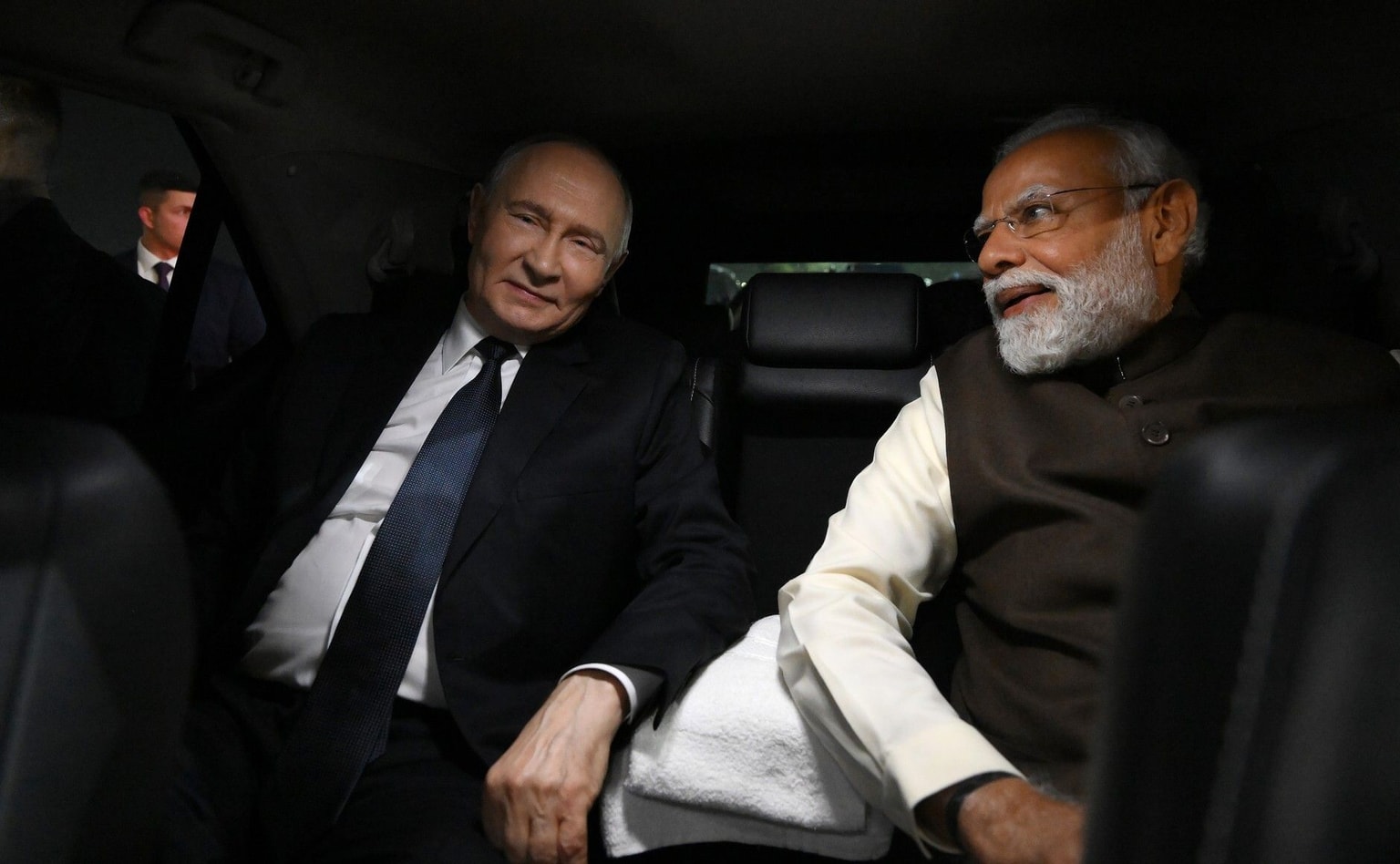
Investigation: How Russia prepares its strategic missile plant for ‘eternal war’
During its war in Ukraine, Russia quietly imported millions in advanced equipment — mostly from China — to expand a key missile plant in Votkinsk.
Russia bypassed sanctions to import Chinese machinery and dramatically boost missile production (Nataliia Shulga/The Kyiv Independent)
Key findings:
- Despite international sanctions, Russia's strategic missile plant was able to import complex machinery to dramatically increase missile production.
- The Kyiv Independent has identified the equipment supplied to the plant, as well as the supply chains, mostly from China.
- We located the plant's new premises, built to house the new machinery.
- We obtained a document confirming that the plant received an order to produce intercontinental missiles capable of reaching the U.S. shortly after Russia's full-scale invasion of Ukraine.
As Russia wages its full-scale war against Ukraine, one of its most important missile plants is quietly expanding, bypassing international sanctions.
The Votkinsk Plant, also known as the Votkinskiy Plant, — a strategic, state-owned facility serving Russia’s nuclear forces — has hired thousands of new workers, added new buildings, and brought in advanced machinery to significantly increase its missile production.
Ukrainians have felt it firsthand. Iskander-M ballistic missiles, with a range of up to 500 kilometers and assembled at Votkinsk, have been increasingly hitting Kyiv and other cities.
But the plant’s core mission is even more threatening: manufacturing intercontinental ballistic missiles (ICBMs) capable of delivering nuclear warheads across continents.
Among them are the Yars and Bulava — missiles designed to reach the United States — and likely the Oreshnik, reportedly capable of striking anywhere in Europe.
According to Ukraine’s military intelligence agency (known by its Ukrainian acronym HUR), Russia is not just replacing missiles lost in its current war with Ukraine — it is stockpiling for a prolonged conflict.
“They are preparing for a long war,” a senior official from Ukraine’s HUR told the Kyiv Independent. “According to our data, Russia is building up a stockpile of missiles of various types.”
All of this expansion is occurring despite sweeping international sanctions against the plant and the Russian missile industry. The Votkinsk Plant is officially blacklisted as an entity by the U.S. and its allies, and selling any materials, machinery, and microelectronics to Russia that are required to build missiles is banned.
Yet, production continues to rise.
The Kyiv Independent examined the internal business operations of the Votkinsk Plant to find out how the sanctioned arms manufacturer has managed to expand.
The key finding: Russia hasn’t done so on its own.
Companies in China, Taiwan, and Belarus — countries that didn’t join Western sanctions against Moscow over its war in Ukraine — supplied the strategic Russian missile factory with critical manufacturing equipment funneled through private Russian intermediaries.
The Kyiv Independent identified millions worth of machinery supplied to the Votkinsk plant this way.
These shipments ultimately strengthened one of Russia’s most dangerous military production sites.
The growth of the missile stockpile produced by the Votkinsk Plant
“Putin's policy is our policy,” read the banners held by Votkinsk Plant's employees on April 5, 2022, at a special rally organized by the plant in support of Russia's war against Ukraine. Russian President Vladimir Putin had announced his country was launching a full-scale invasion of Ukraine on Feb. 24, 2022.

They likely didn’t yet realize how right they were.
Full-scale war has been a boon for Votkinsk: Since its start, the plant has expanded and increased output.
In 2024, Russia produced nearly three times more Iskander-M ballistic missiles than in 2023 — 700 compared to 250, according to RUSI, a London-based defense and security think tank.
Ukraine's military intelligence agency, HUR, agrees with this assessment, its representatives told the Kyiv Independent.
As production at the plant grows, so do the attacks.
Russia has been striking Ukraine with Iskander-Ms and similar missiles 4.5 times more in 2024 than the year before — 245 strikes in 2024 compared to around 55 in 2023. The increase is only partly explained by the supply of North Korean missiles to Russia.
Moscow has already launched more than 180 of those missiles so far this year.
It was with Iskander-type ballistic missiles that Russia launched its bloodiest attacks on Ukrainian cities far from the front line in 2025.
But even with the intensified attacks, Russia is far from using all the Iskander missiles it’s now producing. The considerable gap between production and the number of missiles used in strikes shows that Russia is building a stockpile.
According to the HUR intelligence, provided to the Kyiv Independent in early June, Russia managed to stockpile some 600 Iskander-M ballistic missiles and another 300 Iskander-K cruise missiles. At the current pace of attacks, it’s a two-year stock.
But the Votkinsk Plant has another line of production: intercontinental missiles.
The Kyiv Independent was unable to find out the exact number of intercontinental missiles currently being produced at the plant. However, a document uncovered by the Kyiv Independent did reveal some traces that Russia was investing in this arsenal of intercontinental missile production.
According to it, one month into the full-scale war against Ukraine, on March 31, 2022 — around the time of Russia’s first defeat near Kyiv — the Russian Defense Ministry ordered the Votkinsk Plant to produce parts for Bulava intercontinental missiles, which are deployed on nuclear submarines, for over $13 million. The plant was to fulfill the contract from 2022 to 2024.
The order is bound to be one of many. Most Russian defense contracts are classified.
A large plant becomes even larger
The Kyiv Independent found that Russian authorities planned the expansion of the Votkinsk missile hub in 2022, after the start of the full-scale invasion of Ukraine.
The process began the following year, from 2023 to 2024, during which the arms manufacturer built new premises, renovated existing ones, hired additional staff, and procured new equipment for missile production.
Using satellite imagery provided by Planet Labs, we identified the location of the plant’s largest new facility: a sheet metal fabrication shop.
In 2023, the site was bare ground; by 2024, a new workshop had risen to house additional machinery.


The plant’s management announced the construction of four additional smaller buildings. At least one of them is complete, and we were able to locate it.

Simultaneously, the missile producer launched a recruitment drive, hiring an additional 2,500 employees during the first 2.5 years of Russia’s full-scale war, according to the plant’s director general.
The total number of employees now exceeds 12,000.
The search for workers continues. As of May 2025, the plant had more than 100 job openings, seeking CNC machine operators, engineers, electromechanics, milling and lathe operators, fitters, and other workers.
But even with more staff and expanded facilities, the plant would not have been able to increase missile output without acquiring new equipment. The Votkinsk Plant ordered a large volume of new machinery for metal processing — a key component of missile production.
According to documents reviewed by the Kyiv Independent, most equipment contracts were signed in the first half of 2023. Given the time needed for manufacturing or importing the machinery, most of it arrived at the plant in 2024.
In addition to Russian-made equipment, the sanctioned facility imported substantial quantities of foreign machine tools.
The Kyiv Independent identified more than 10 contracts signed by the Votkinsk Plant in 2023 for the purchase of dozens of imported metal-processing machines. Their total value exceeds $11 million, which only represents a portion of the plant’s broader investment in expansion.
The plant allegedly bought a total of 7,000 units of new equipment as part of the post-invasion expansion plan — according to the figure the plant’s management shared with Russian media.
Documents reviewed by the Kyiv Independent suggest that this number includes not only computer-controlled milling and lathe machines, but also metal heating furnaces, stamping presses, and a range of other tools and devices.
The purchases were financed through a state subsidy provided by the Russian government. Russia’s Industry and Trade Ministry signed an agreement to fund the plant’s procurement on Dec. 26, 2022 — nine months after the Russian army failed in its attempt to capture Kyiv, when it became clear that the war wouldn’t be a quick one.
Chinese and Taiwanese equipment for the production of Russian missiles
The sanctioned plant used intermediaries — little-known Russian private companies, some specializing in machine tools — to purchase imported equipment. This method is commonly employed by Russian arms manufacturers to hide the final buyer and ease the transaction for the supplier.
Imported equipment came primarily from mainland China. Of the 10 contracts we identified, eight involved products supplied from China. In one of them, the goods came from a Chinese factory owned by a Taiwanese manufacturer.
In May 2023, the Votkinsk Plant signed a $2.5 million contract with the Russian firm Ural Machine Tool Company, which is engaged in the wholesale trade of machine tools. The company was tasked with sourcing and supplying the plant with two models of imported equipment.
The first model is a CNC milling center for metal processing branded by Taiwanese company Ecom Precision Machinery Co., which uses the Japanese Fanuc CNC system.
Eight months later, in January 2024, the equipment was delivered to the plant, according to Russian documents obtained by the Kyiv Independent.
Reviewing Russian customs records, we found that the Taiwan-branded equipment intended for the missile plant was shipped to Russia by a Chinese company named Zhangzhou Donggang Precision Machinery Company, also known as Zhangzhou Dong Iron Precision Machinery Co.
This company operates as a subsidiary of the Taiwanese manufacturer Ecom — effectively, its Chinese production facility.

With assistance from the Organized Crime and Corruption Reporting Project (OCCRP), we identified the key figure behind the producer.
Ecom is a private company linked to Taiwanese businessman Lin Tz-ming (or Lin Ziming, following mainland Chinese romanization). He graduated from the University of California and previously worked in mainland China, according to media reports. Ecom was founded by his father in 1976.
We reached out to both the Taiwanese manufacturer and its Chinese subsidiary for comment but received no response.
The second model ordered by the missile plant is a CNC lathe for metal processing, manufactured by the Chinese producer WMT CNC Industrial Co.
According to the contract, Ural Machine Tool Company was to supply the plant with eight numerically controlled lathes.
Additionally, around the same time in May 2023, the Votkinsk Plant ordered nine more similar machines from WMT CNC through the Russian First Construction Company under a contract valued at nearly $2 million.
Customs records indicate that WMT CNC repeatedly shipped these machines and other equipment to Russian trading firms that supplied them to the Votkinsk Plant.

WMT CNC Industrial is also a private company, primarily owned by Chinese businessman, Gui Shuanglong.
Neither the Chinese manufacturer nor its Russian partners, Ural Machine Tool Company and First Construction Company, responded to written requests for comment.
The Kyiv Independent identified additional machines and supply chains that brought new missile production equipment to Russia during its war with Ukraine. Beyond several more Chinese machines, the plant has purchased at least one other type of Taiwanese machines, as well as Belarusian equipment.
To explore the details, scroll through the cards.
China provides more than machines
It is no secret that China is the largest supplier of equipment, electronic components, and materials that Russia seeks for weapons production.
The Kyiv Independent has reviewed the latest non-public report by the Ukrainian think tank Economic Security Council of Ukraine (ESCU) on the production of Iskander missiles, which are assembled at the Votkinsk Plant.
The report examined the supply of titanium, carbon fiber, and missile fuel components for Iskander production in 2024.
“Titanium is used to make the aerodynamic rudders that control a missile at launch, as well as for the body, nozzles, and combustion chambers of the engine,” explained Denys Hutyk, ESCU’s executive director.
The organization’s researchers found that the main flow of titanium products reached the Votkinsk Plant through a supply chain originating in China.
Russia’s largest titanium producer, VSMPO-AVISMA Corporation, operates a subsidiary in Beijing — VSMPO Tirus Beijing Metallic Materials — which imports titanium ore from major Chinese manufacturers.
In addition, the Russian producer purchased primary titanium products through China’s Tianjin Chengan International Trading Company and India’s DCW. It then supplied Russian military plants, including Votkinsk, through a subsidiary trading house in Russia.
None of the companies responded to a written request for comment.
China, along with some other countries, has not imposed sanctions on Russia, leaving local companies to decide individually whether to comply with American and European restrictions.
As a result, despite China’s declared neutrality in the Russian war, both private and state-owned companies there have effectively become a lifeline for Russian arms manufacturers.
Expansion of Russian missile production: How serious is it?
Although the current increase in production at the Votkinsk Plant is primarily aimed at enlarging the stockpile of short-range missiles for strikes against Ukraine, the plant's new equipment is universal.
In other words, Russia is expanding its capabilities to produce intercontinental missiles, as well.
"Yars and Bulava, both capable of carrying nuclear warheads, are produced by this enterprise. These missiles are no longer aimed at Ukraine, but at Washington, New York, other American cities, other European cities," says Oleh Katkov, editor-in-chief of the Ukrainian military portal Defense Express.
He adds that missiles contain multiple metal parts, "and the new machines can be used to produce any missile manufactured at this enterprise. In addition, the plant can produce components for other types of missiles assembled at other Russian missile plants."
At the same time, no Russian missile is produced by a single plant. An entire network of enterprises makes different parts of the weapon — its body, guidance systems, and the fuel needed to power it — before it is assembled at a plant like Votkinsk.
In total, more than 10 Russian military enterprises are involved in making an Iskander missile.
The growing number of Russian Iskanders stockpiles and the statistics of attacks mean that Russia has increased the capacity of not only the Votkinsk Plant, but also of other enterprises supplying parts for these missiles.
The growth at Votkinsk is just one part of a wider effort — one that now spans dozens of enterprises and includes both short-range missiles for use in Ukraine and intercontinental systems capable of striking far beyond it.
The buildup shows no sign of slowing — or of being limited to a single war.
Note from the author:
Hey, this is Alisa Yurchenko, the author of this story.
When Russian missiles and drones strike Kyiv and our apartments shake from the blasts, I find some reassurance in knowing that we can name those who are helping Russia ramp up its weapons production to prolong this bloody war.
If you want to support such investigative work, become a member of the Kyiv Independent. Your contributions help us produce investigations like this one.












